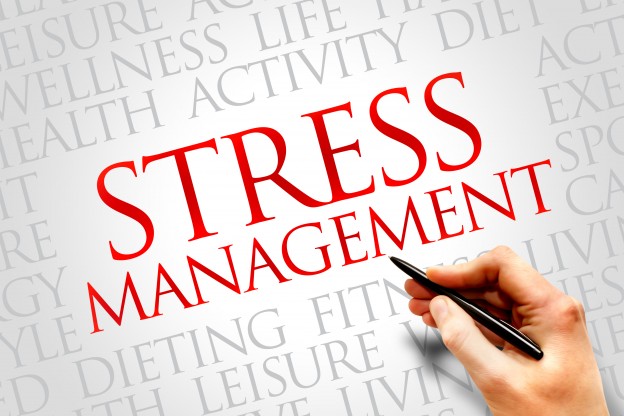Stress Management means basically, learning how to manage stress, by witnessing it, and releasing it.
Stress management, is simply, a daily process to let go of tension stored in the body and mind. Without this letting go process, we become candidates for ulcers, heart attacks, migraines and premature aging. All known to be caused by stress. Stress Management techniques, allow us to discover and experience, how, we hold emotions, thoughts and experiences in out bodies. Exercises will offer us the opportunity, to tune into different moods, feelings, attitudes, and states of consciousness beside the low-grade stress levels, most people in our society, operate under. In our busy information society, we are constantly bombarded by external stimuli. A good stress management program, can help tune out the exterior world, and allow the participant to drop inside their bodies, and find a place of stillness. Some techniques that aid in this process, are deep breathing, extended stretching, and body scanning – all done in a quiet, warm room, with soft music playing, or simply, the relaxing sound of one’s own, deep breathing.
We learn to increase the probability of desired moods, and feelings through our heightened self–awareness, while simultaneously decreasing negative states of anxiety. Excess of stress can also  result in an extended period “flight or fight syndrome” which over time can drain the adrenal glands. Participants in a stress management program gain a powerful awareness of how to positively influence health, reactions, feelings and response. A good mind/body class can give clients the tools they can use for the rest of their lives.
result in an extended period “flight or fight syndrome” which over time can drain the adrenal glands. Participants in a stress management program gain a powerful awareness of how to positively influence health, reactions, feelings and response. A good mind/body class can give clients the tools they can use for the rest of their lives.
Yoga is the 6,000 year old secret to health and vitality. Yoga can be considered technology for getting back in touch with our true essence and ourselves. It is a way of remembering the health and wholeness that is our natural state of being. Yoga, when broken down to its most simple form is breathing and feeling.
Through this breathing and feeling we learn to control our reactions to events and people. It is not the events and people in our lives that give us stress but the way we react to them. What makes yoga unique in terms of stress reduction is in its multifaceted approach. By working at the physical and psychological levels concurrently, yoga reduces stress at each level and this reduction in stress is supported by the work done at other levels. Yoga postures combined with deep breathing facilitate deep relaxation that combats stress.
Physically, yoga massages the skeletal system which supports bone mass and growth while taking the stress away from the supporting muscles and tendons. Yoga mechanically removes tension from the muscles through stretching. The steady even yoga breathing reduces stress levels in the body. Stress response, is accompanied by rapid, shallow breathing., Yoga encouraged deep diaphragmatic breathing activating a relaxation response. Yoga also massages the internal organs reducing high blood pressure, stress in the cardiovascular system at the level of the heart, arteries and blood. The nerves are massaged and stretched through yoga, conducting messages; throughout the body.
Emotionally the body believes what the mind believes. Affirmations about peace, calm, and tranquility, along with positive imagery are conveyed to the nervous system. Yoga brings greater relationship with others, life, and us. As we begin to explore these relationships more, we see which interactions genuinely support us in moving towards calmness. As we become more relaxed through yoga and stress management classes, we release addictive behaviors, which are often used to relieve stress. Yoga brings awareness to the emotional blocks that limit our experience of life. Our perception of life has been conditioned by our experiences and sometimes we close ourselves off from feelings and emotions. Through yoga we learn to bring awareness to all parts of ourselves with the understanding that through integration, we come to a natural place of balance. Many of our stressful habit patterns are conditioned. Yoga teaches a whole set of patterns which are helpful in reducing stress.
















